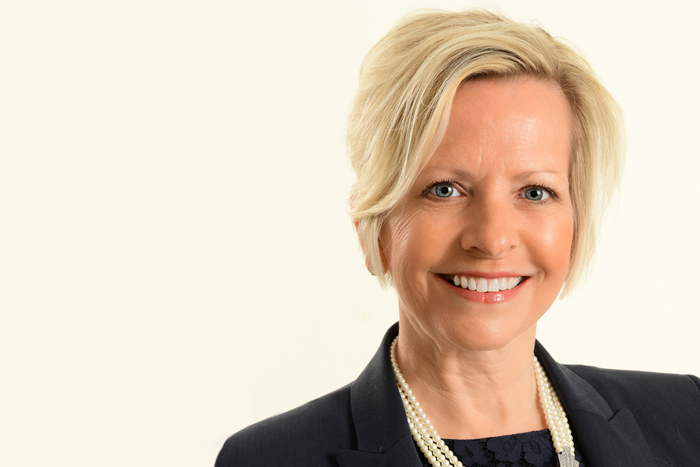Dee Baird, Senior VP of Economic Development at the Greater Omaha Chamber of Commerce, is working hard to dismantle regional barriers to economic investment.
In doing so, she is capitalizing on years of relationship-building between state and local governments, businesses, nonprofits, and civic leaders.
“We are stronger together if we can promote ourselves as a region of 1.3 million, versus Lincoln being on its own at under 300,000, or Omaha being on its own at under a million people,” Baird said.
The region has had some major wins lately.
Site Selection magazine, the official industry publication of the Industrial Asset Management Council, whose yearly analyses are regarded by corporate real estate analysts as “the industry scoreboard,” awarded Nebraska its per-capita Governor’s Cup award for the third consecutive year.
The Governor’s Cup recognizes states with the highest number of new economic development projects in a year. For a project to count towards the Governor’s Cup competition, it must generate a minimum investment of $1 million, create 20 or more new jobs, or add 20,000 square feet or more of new space.
Site Selection also named the Omaha-Council Bluffs metro area No. 1 for new and expanded corporate facilities among areas with populations between 200,000 and 1 million.
The win included such regional projects as Flywheel expanding its headquarters to 65,000 square-feet in Millwork Commons of North Downtown Omaha; Warren Distribution investing $12.8 million, expanding to 211,000 square feet and creating 30 new jobs in Council Bluffs; and Facebook expanding to 2.6 million square feet in Sarpy County.
The Lincoln metro area came in at No. 4.
The Power of “We” Times Three
As a way to celebrate the strength of the regional partnership, Baird convened Nebraska Department of Economic Development’s Dave Rippe and Lincoln Partnership for Economic Development’s Pat Haverty to devise and place an ad in the March issue of Site Selection magazine. The result: “One Team, One Win: The Power of ‘We’ Times Three.”
Baird repeated the phrase multiple times to Silicon Prairie News to highlight its importance. The spirit of regional collaboration, and the ease of business networking opportunities here, are some of the main factors that set the area apart from, say, Boston, Houston, Phoenix, Portland, Charlotte, Orlando, and all the other larger markets competing for investment.
“I’ve been enough meetings with site consultants and their clients to know that regions that have their act together and can demonstrate a strong partnership and collaboration are the ones that are winning,” Baird said.
Welcome to Nebraska
Baird lived in Cedar Rapids for 24 years and held various roles related to economic development and higher education. Most recently, she was past president and CEO of the Cedar Rapids Metro Economic Alliance, where she nurtured collaborative relationships between development groups in Cedar Rapids and Iowa City. When she moved to Omaha last year, she was happy to see a similarly regional approach to business investment taking place.
“I’m benefitting from a lot of great leadership that understood the value of establishing and developing relationships on a regional basis,” Baird said.
When companies locate their business in one city in the region, other cities benefit. “A win in Omaha is a win for Lincoln,” Baird said. “A win in Lincoln is a win for Omaha.”
How Tech Workers and the Midwestern Spirit Attract Investment
The tech talent community plays a prime role in attracting new business investment, expansion, and growth, Baird said. If companies can’t find enough skilled tech workers here, they will look elsewhere, to bigger cities.
Nurturing the tech talent ecosystem is so vital to business investment that the Greater Omaha Chamber of Commerce has included growing the tech workforce as a key component of the Chamber’s five-year economic goals. Metrics include attracting 10,000 new-to-market tech workers, either from other markets, higher education institutions, or tech training programs. The Chamber also seeks to upscale 10,000 local underemployed or unemployed tech workers.
Organizations like the AIM Institute, which offers specialized tech training via the Interface School, will be crucial to filling the demand for new tech workers and for helping current tech workers upgrade their skill sets, according to Baird.
““Tech talent is really important. It is going to be the differentiator of how we will achieve success. The training and the focus of AIM and AIM’s mission are so important to our goals,” Baird said.
Moreover, the Midwestern spirit plays a less tangible, but no less important, role in the continued growth and success of the region.
Baird said that LinkedIn recently chose to double their workforce in Omaha, rather than in Chicago or any of their other offices around the globe, because “the productivity that they get from their workforce here, and the happiness factor of their employees here, is so much greater. It’s a message we get consistently.”




